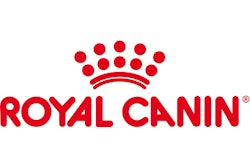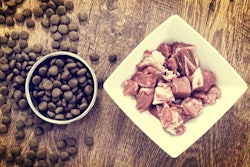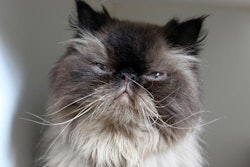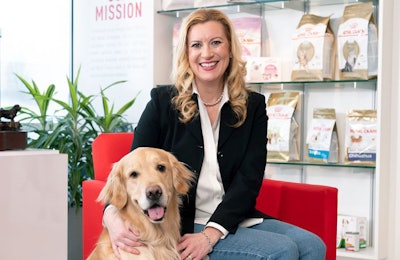
Nearly every pet food company has a nutritional philosophy that underpins and guides everything from product development to brand strategy to marketing to distribution. Royal Canin’s philosophy has always shone through in its products: an emphasis on science over market trends.
Staying true to that philosophy is the company’s biggest achievement in its 50-year history, said Loic Moutault, global president. “To stick to this philosophy – you know, there is a lot of pressure, consumer trends, societal trends, public opinion – Royal Canin has stuck to its founder’s idea, which is, full nutrition can improve the health of cats and dogs.”
No matter the medium or audience, the company’s message is about cat and dog nutrition and science, he added. “Animals don’t speak, so we have to let the science speak.”
Creating a pet food market
Royal Canin celebrated its 50th anniversary in 2018. Acquired by Mars Inc. in 2002, it has essentially remained a separate division, while enjoying the resources and benefits of its parent company such as shared research on pet nutrition and other areas. That includes following Mars Petcare’s Essential Nutrient Standards to develop and formulate its pet food products – in addition to more universal guidelines like those from the National Research Council and Association of American Feed Control Officials in the U.S. and FEDIAF in Europe, according to Vincent Biourge, DVM, Ph.D., Royal Canin’s scientific director.
Yet the company’s product development is its own, characterized by specialized pet foods, especially its breed-specific line. That started in 1999, when a Royal Canin researcher became curious after a Persian cat breeder told them she had noticed some of her cats wouldn’t eat all their kibble. The researcher decided to investigate and discovered that, likely due to their brachycephalic faces, Persians eat by scooping up kibble with the underside of their tongues (“like a hook,” Moutault said). The discovery led to the company developing a specially shaped kibble for Persians, with an accompanying appropriate formula.
“When we launched this product, everybody laughed; the competition laughed,” Moutalt said. Yet now the company’s success rests in part on its portfolio of 55 different breed products for cats and dogs, all based on scientific research into each breed’s special needs, he added. “We are the only company having that, and we can do lifestage products for each of those. We created this market based on research and observation.”
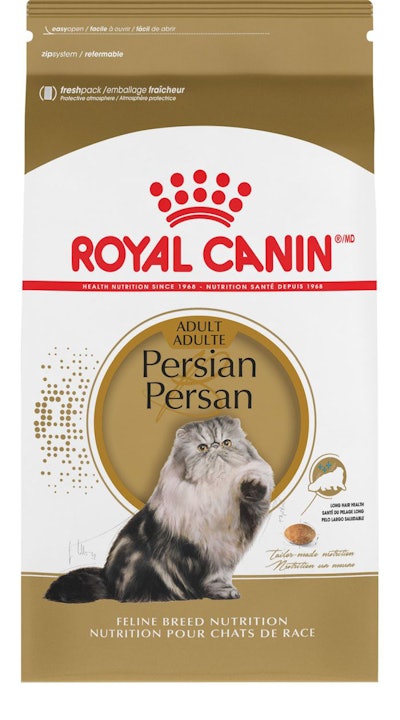
Royal Canin’s line of breed-specific pet foods, started in 1999 with a product for Persian cats, now boasts a portfolio of 55 different products for dog and cat breeds. l (Courtesy of Royal Canin)
More recent innovations include Anallergenic, a diagnostic diet using hydrolyzed proteins for dogs with skin sensitivities, 10 years in research and development until its launch in 2012; GHA, a test that scans dogs’ DNA, allowing veterinarians to create customized health plans based on each dog’s genetic code, released in 2014; the ICU line of liquid and complete diets specially formulated for tube feeding of cats and dogs facing critical health conditions, available since 2016; and in 2018, Puppy ProTech, a complete genetics and nutrition program to address puppy mortality.
Moutault said that, to develop the last product, Royal Canin worked with researchers at a French university for five years. “For 30 years, we were tapping into existing science; now we must step up to find future science and technologies.” They’re doing that by partnering more with leading scientific, veterinary and behavioral experts.
Ongoing growth, ongoing challenges
Thanks to such partnerships and product development, Royal Canin has grown continuously for 20 years. Its product portfolio now spans 250 dry and 100 wet pet food formulas, developed and produced at 16 factories around the world by over 7,000 associates, including 500 veterinarians and nutritionists. The company’s universe also includes a packaging center, R&D center, four laboratories and two innovation centers. Some of those facilities comprise the global headquarters in Aimargues, France, while others came from the Mars acquisition of the Eukanuba brand, which became part of Royal Canin in 2016.
Much of Moutault’s efforts since becoming global president in 2014 have involved supporting the growth with proper infrastructure, including global expansion, such as the newest plant in South Korea. Royal Canin had been mostly French and European, Moutault commented, so it had to develop a global supply chain and standardize all factories, specifications, supply chain and research protocols. It also focused on establishing operations in North America.
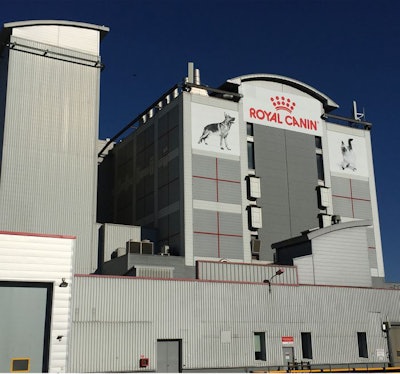
Royal Canin has 16 production plants around the world, including at its global headquarters in Aimargues, France. l (Debbie Phillips-Donaldson)
Other changes and adaptions revolve around the “digitalization of the economy,” Moutault said, which is changing how consumers shop and interact with brands. With professionals such as breeders and veterinarians not as involved in pet food purchasing transactions, Royal Canin has had to adapt. “Technology has helped us get our message and education out to a much broader audience and much faster and easier,” he added.
Another constant challenge is the availability of raw materials. “We have a goal of using 34,000 [metric] tons of alternative proteins by 2020,” Moutault said. The company also has sustainability goals to ensure 100 percent of plastic packaging can be easily and safely reused, recycled or composted by 2025. In 2017 the company achieved zero waste in its operations.
Increasing pet ownership, care presents opportunities
Consumer trends can create their own challenges outside of pet food. “The dog used to be in the yard, now it’s in the bedroom,” Moutault said. “Owners tend to lose sight of the fact that it’s still a dog, not a furry human – and that’s a big societal issue,” adding that we need to adapt infrastructures and lifestyles to ensure we’re meeting the needs of the animals as pet ownership increases.
Yet, care for animals is improving, and economic growth worldwide, especially in emerging markets, is helping spur the pet food market’s 4 to 5 percent annual growth. “Overall, the pet care market is a very nice, healthy category to be in,” Moutault said. Royal Canin seems poised to retain a strong position within it.
Just the Facts
Headquarters: Global: Aimargues, France; U.S.: St. Louis, Missouri, USA
Facilities: 16 worldwide, including five in the U.S.: four manufacturing sites (Rolla, Missouri; Lebanon, Tennessee; Fremont, Nebraska; North Sioux City, Iowa) and a pet health nutrition center (Lewisburg, Ohio)
Officers: Global: Loic Moutault, president; U.S.: Kamie Eckert, president and general manager Royal Canin USA; David Everson, chief marketing officer/professional pillar leader; Bob Betz, vice president, veterinary sales; Karoly Horvath, vice president, specialty retail; Brent Mayabb, DVM, vice president, corporate affairs/chief veterinary officer
Sales: One of Mars’ billion-dollar brands globally
Brands: Royal Canin and Eukanuba
Distribution: Specialty retailers, veterinary clinics and breeders
Employees: Globally: 7,000; U.S.: 1,000
Website/Social Media: www.royalcanin.com; www.facebook.com/royalcanin; www.instagram.com/royalcaninus; https://twitter.com/royalcanin; www.linkedin.com/company/royal-canin
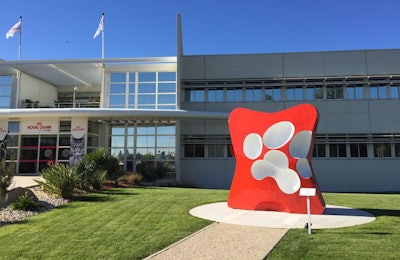
With its global headquarters in Aimargues, France, Royal Canin’s universe spans facilities all over the world, including production plants, a packaging center, R&D center, four laboratories and two innovation centers. l (Photo by Debbie Phillips-Donaldson)
Royal Canin balances online and global pet food presence
Tim Wall
Kamie Eckert started at Royal Canin by building the brand’s online presence. Now, as president of the company’s U.S. division, she leverages the brand’s e-commerce capacity while maintaining a global physical footprint in veterinary hospitals, pet specialty retailer outlets and breeder networks..
“Having been in e-commerce, I would tell you that there has never been a brand that’s better built for the e-commerce space than Royal Canin, and it is because it is so precise and because we have so many SKUs in our portfolio,” Eckert said.
Maintaining Royal Canin’s sweet spot in e-commerce requires striking a balance between meeting pet owners’ demands while making sure the company maintains connections with the recommenders that form the heart of the brand’s business, she said. Those relationships with veterinarians and others are key because they make the dietary recommendations that most resonate with pet owners, and that advice doesn’t always come across online in the same way as when a pet owner is working with a veterinarian, breeder or someone in a pet specialty store.
Those veterinarians and other prescribers live around the globe. “One of the things that I love about Royal Canin is it is truly a global company,” Eckert said. It has business locations in approximately 60 countries worldwide; counting importing, the brand reaches more than 100 countries.
“We try to manufacture as close to the source where the nutrition will be used as possible, and I think one of the things I love about it is we are constantly looking at where pets in the world have an opportunity to benefit from better nutrition,” she said.
Read the full interview with Kamie Eckert: www.PetfoodIndustry.com/articles/7871.




